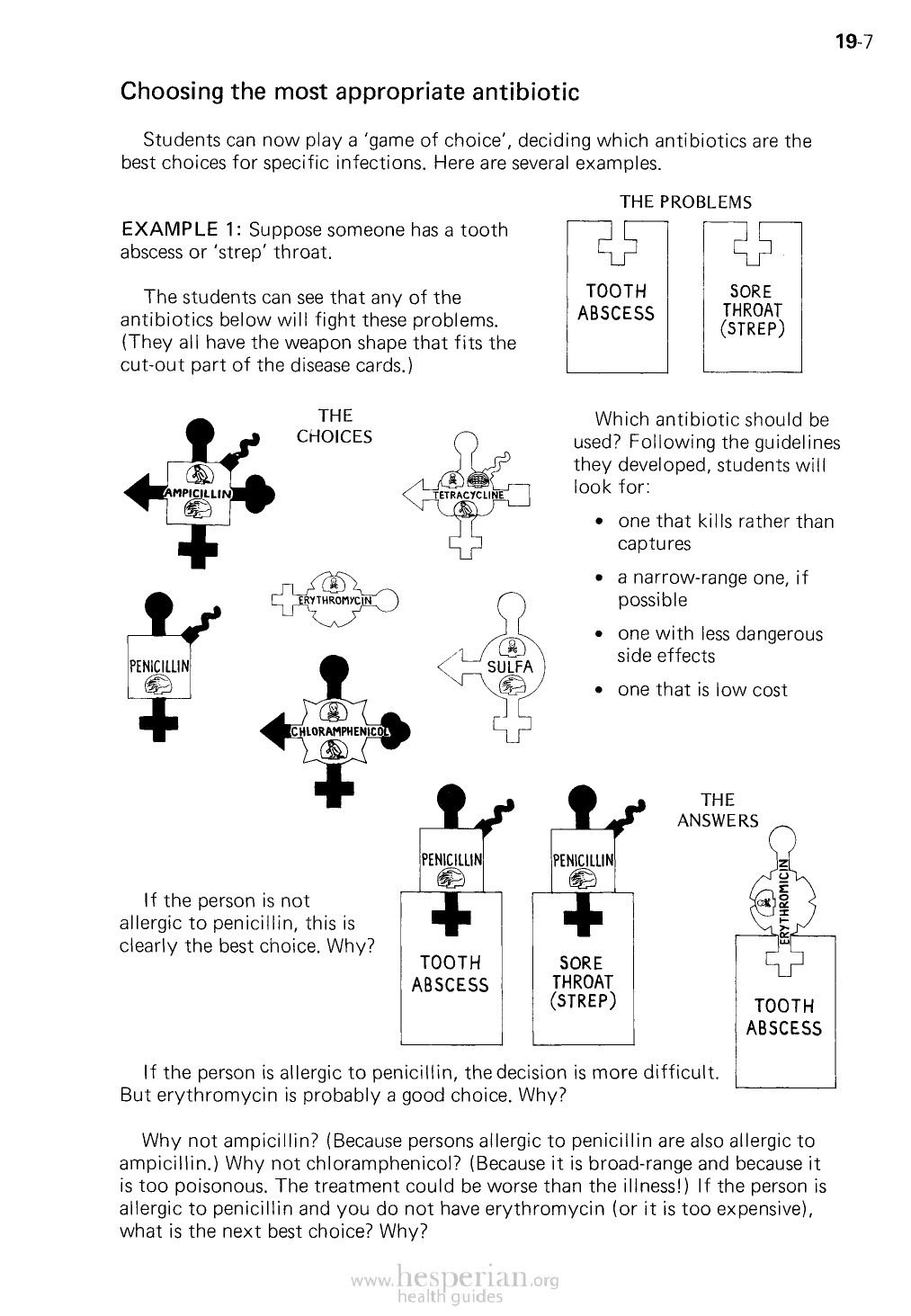
Choosing the most appropriate antibiotic
19-7
Students can now play a ‘game of choice’, deciding which antibiotics are the best
choices for specific infections. Here are several examples.
EXAMPLE 1: Suppose someone has a tooth
abscess or ‘strep’ throat.
THE PROBLEMS
The students can see that any of the
antibiotics below will fight these problems.
(They all have the weapon shape that fits the
cut-out part of the disease cards.)
THE
CHOICES
Which antibiotic should be
used? Following the guidelines
they developed, students will
look for:
• one that kills rather than
captures
• a narrow-range one, if
possible
• one with less dangerous
side effects
• one that is low cost
If the person is not allergic
to penicillin, this is clearly the
best choice. Why?
THE
ANSWERS
If the person is allergic to penicillin, the decision is more difficult.
But erythromycin is probably a good choice. Why?
Why not ampicillin? (Because persons allergic to penicillin are also allergic to
ampicillin.) Why not chloramphenicol? (Because it is broad-range and because it is too
poisonous. The treatment could be worse than the illness!) If the person is allergic to
penicillin and you do not have erythromycin (or it is too expensive), what is the next
best choice? Why?